1. Sanna T, Diener HC, Passman RS, Di Lazzaro V, Bernstein RA, Morillo CA, et al. Cryptogenic stroke and underlying atrial fibrillation. N Engl J Med. 2014; 370(26):2478–2486. PMID:
24963567.
2. Gladstone DJ, Spring M, Dorian P, Panzov V, Thorpe KE, Hall J, et al. Atrial fibrillation in patients with cryptogenic stroke. N Engl J Med. 2014; 370(26):2467–2477. PMID:
24963566.
3. Freedman B, Potpara TS, Lip GY. Stroke prevention in atrial fibrillation. Lancet. 2016; 388(10046):806–817. PMID:
27560276.
4. Barbarossa A, Guerra F, Capucci A. Silent atrial fibrillation: a critical review. J Atr Fibrillation. 2014; 7(3):1138. PMID:
27957123.
5. Seet RC, Friedman PA, Rabinstein AA. Prolonged rhythm monitoring for the detection of occult paroxysmal atrial fibrillation in ischemic stroke of unknown cause. Circulation. 2011; 124(4):477–486. PMID:
21788600.
6. Ziegler PD, Glotzer TV, Daoud EG, Singer DE, Ezekowitz MD, Hoyt RH, et al. Detection of previously undiagnosed atrial fibrillation in patients with stroke risk factors and usefulness of continuous monitoring in primary stroke prevention. Am J Cardiol. 2012; 110(9):1309–1314. PMID:
22819433.
7. Somani S, Russak AJ, Richter F, Zhao S, Vaid A, Chaudhry F, et al. Deep learning and the electrocardiogram: review of the current state-of-the-art. Europace. 2021; 23(8):1179–1191. PMID:
33564873.
8. Ribeiro AH, Ribeiro MH, Paixão GM, Oliveira DM, Gomes PR, Canazart JA, et al. Automatic diagnosis of the 12-lead ECG using a deep neural network. Nat Commun. 2020; 11(1):1760. PMID:
32273514.
9. Baek YS, Lee SC, Choi W, Kim DH. A new deep learning algorithm of 12-lead electrocardiogram for identifying atrial fibrillation during sinus rhythm. Sci Rep. 2021; 11(1):12818. PMID:
34140578.
10. Attia ZI, Noseworthy PA, Lopez-Jimenez F, Asirvatham SJ, Deshmukh AJ, Gersh BJ, et al. An artificial intelligence-enabled ECG algorithm for the identification of patients with atrial fibrillation during sinus rhythm: a retrospective analysis of outcome prediction. Lancet. 2019; 394(10201):861–867. PMID:
31378392.
11. Sana F, Isselbacher EM, Singh JP, Heist EK, Pathik B, Armoundas AA. Wearable devices for ambulatory cardiac monitoring: JACC state-of-the-art review. J Am Coll Cardiol. 2020; 75(13):1582–1592. PMID:
32241375.
12. Perez MV, Mahaffey KW, Hedlin H, Rumsfeld JS, Garcia A, Ferris T, et al. Large-scale assessment of a smartwatch to identify atrial fibrillation. N Engl J Med. 2019; 381(20):1909–1917. PMID:
31722151.
13. Hwang J, Kim J, Choi KJ, Cho MS, Nam GB, Kim YH. Assessing accuracy of wrist-worn wearable devices in measurement of paroxysmal supraventricular tachycardia heart rate. Korean Circ J. 2019; 49(5):437–445. PMID:
30808083.
14. Ramkumar S, Nerlekar N, D’Souza D, Pol DJ, Kalman JM, Marwick TH. Atrial fibrillation detection using single lead portable electrocardiographic monitoring: a systematic review and meta-analysis. BMJ Open. 2018; 8(9):e024178.
15. Giebel GD, Gissel C. Accuracy of mHealth devices for atrial fibrillation screening: systematic review. JMIR Mhealth Uhealth. 2019; 7(6):e13641. PMID:
31199337.
16. Kwon S, Lee SR, Choi EK, Ahn HJ, Song HS, Lee YS, et al. Validation of adhesive single-lead ECG device compared with holter monitoring among non-atrial fibrillation patients. Sensors (Basel). 2021; 21(9):3122. PMID:
33946269.
17. Nault I, André P, Plourde B, Leclerc F, Sarrazin JF, Philippon F, et al. Validation of a novel single lead ambulatory ECG monitor - Cardiostat™ - Compared to a standard ECG Holter monitoring. J Electrocardiol. 2019; 53:57–63. PMID:
30641305.
18. Karaoğuz MR, Yurtseven E, Aslan G, Deliormanlı BG, Adıgüzel Ö, Gönen M, et al. The quality of ECG data acquisition, and diagnostic performance of a novel adhesive patch for ambulatory cardiac rhythm monitoring in arrhythmia detection. J Electrocardiol. 2019; 54:28–35. PMID:
30851474.
19. Cheung CC, Kerr CR, Krahn AD. Comparing 14-day adhesive patch with 24-h Holter monitoring. Future Cardiol. 2014; 10(3):319–322. PMID:
24976467.
20. Ramesh J, Solatidehkordi Z, Aburukba R, Sagahyroon A. Atrial fibrillation classification with smart wearables using short-term heart rate variability and deep convolutional neural networks. Sensors (Basel). 2021; 21(21):7233. PMID:
34770543.
21. Tutuko B, Rachmatullah MN, Darmawahyuni A, Nurmaini S, Tondas AE, Passarella R, et al. Short single-lead ECG signal delineation-based deep learning: implementation in automatic atrial fibrillation identification. Sensors (Basel). 2022; 22(6):2329. PMID:
35336500.
22. Khairuddin A, Azir KF, Kan PE. Limitations and future of electrocardiography devices: a review and the perspective from the Internet of Things. In : Proceedings of 2017 International Conference on Research and Innovation in Information Systems (ICRIIS); 2017 July 16–17; Langkawi, Malaysia. New York, NY, USA: IEEE;2017. p. 1–7.
23. Maan A, Mansour M, Ruskin JN, Heist EK. Impact of catheter ablation on P-wave parameters on 12-lead electrocardiogram in patients with atrial fibrillation. J Electrocardiol. 2014; 47(5):725–733. PMID:
24850319.
24. Hu X, Jiang J, Ma Y, Tang A. Novel P wave indices to predict atrial fibrillation recurrence after radiofrequency ablation for paroxysmal atrial fibrillation. Med Sci Monit. 2016; 22:2616–2623. PMID:
27450644.
25. Miao Y, Xu M, Yang L, Zhang C, Liu H, Shao X. Investigating the association between P wave duration and atrial fibrillation recurrence after radiofrequency ablation in early persistent atrial fibrillation patients. Int J Cardiol. 2022; 351:48–54. PMID:
34954277.
26. Letsas KP, Pappas LK, Gavrielatos G, Efremidis M, Sideris A, Kardaras F. ST-segment elevation induced during the transseptal procedure for radiofrequency catheter ablation of atrial fibrillation. Int J Cardiol. 2007; 114(1):e12–e14. PMID:
17049645.
27. Lee W, Seo K. Downsampling for binary classification with a highly imbalanced dataset using active learning. Big Data Research. 2022; 28:100314.
28. Qazi N, Raza K. Effect of feature selection, SMOTE and under sampling on class imbalance classification. In : Proceedings of 2012 UKSim 14th International Conference on Computer Modelling and Simulation; 2012 March 28–30; Cambridge, UK. New York, NY, USA: IEEE;2012. p. 145–150.
29. He K, Zhang X, Ren S, Sun J. Deep residual learning for image recognition. In : Proceedings of 2016 IEEE Conference on Computer Vision and Pattern Recognition (CVPR); 2016 June 27–30; Las Vegas, NV, USA. New York, NY, USA: IEEE;2016. p. 770–778.
30. He F, Liu T, Tao D. Why ResNet works? Residuals generalize. IEEE Trans Neural Netw Learn Syst. 2020; 31(12):5349–5362. PMID:
32031953.
31. Hüsken M, Stagge P. Recurrent neural networks for time series classification. Neurocomputing. 2003; 50:223–235.
32. Singh S, Pandey SK, Pawar U, Janghel RR. Classification of ECG arrhythmia using recurrent neural networks. Procedia Comput Sci. 2018; 132:1290–1297.
33. Hochreiter S, Schmidhuber J. Long short-term memory. Neural Comput. 1997; 9(8):1735–1780. PMID:
9377276.
34. Yu Y, Si X, Hu C, Zhang J. A review of recurrent neural networks: LSTM cells and network architectures. Neural Comput. 2019; 31(7):1235–1270. PMID:
31113301.
35. Karim F, Majumdar S, Darabi H, Chen S. LSTM fully convolutional networks for time series classification. IEEE Access. 2018; 6:1662–1669.
36. Reyad M, Sarhan AM, Arafa M. A modified Adam algorithm for deep neural network optimization. Neural Comput Appl. 2023; 35(23):17095–17112.
37. Jia X, Feng X, Yong H, Meng D. Weight decay with tailored Adam on scale-invariant weights for better generalization. IEEE Trans Neural Netw Learn Syst. Forthcoming. 2022; DOI:
10.1109/TNNLS.2022.3213536.
38. Simundic AM. Diagnostic accuracy—part 1: basic concepts: sensitivity and specificity, ROC analysis, STARD Statement. Point Care. 2012; 11(1):6–8.
39. Nigusse AB, Mengistie DA, Malengier B, Tseghai GB, Langenhove LV. Wearable smart textiles for long-term electrocardiography monitoring—a review. Sensors (Basel). 2021; 21(12):4174. PMID:
34204577.
40. Coppola EE, Gyawali PK, Vanjara N, Giaime D, Wang L. Atrial fibrillation classification from a short single lead ECG recording using hierarchical classifier. In : Proceedings of 2017 Computing in Cardiology (CinC); 2017 September 24–27; Rennes, France. New York, NY, USA: IEEE;2017.
41. Yazdani S, Laub P, Luca A, Vesin JM. Heart rhythm classification using short-term ECG atrial and ventricular activity analysis. In : Proceedings of 2017 Computing in Cardiology (CinC); 2017 September 24–27; Rennes, France. New York, NY, USA: IEEE;2017.
42. Bahit MC, Sacco RL, Easton JD, Meyerhoff J, Cronin L, Kleine E, et al. Predictors of atrial fibrillation development in patients with embolic stroke of undetermined source: an analysis of the RE-SPECT ESUS trial. Circulation. 2021; 144(22):1738–1746. PMID:
34649459.
43. Gladstone DJ, Dorian P, Spring M, Panzov V, Mamdani M, Healey JS, et al. Atrial premature beats predict atrial fibrillation in cryptogenic stroke: results from the EMBRACE trial. Stroke. 2015; 46(4):936–941. PMID:
25700289.
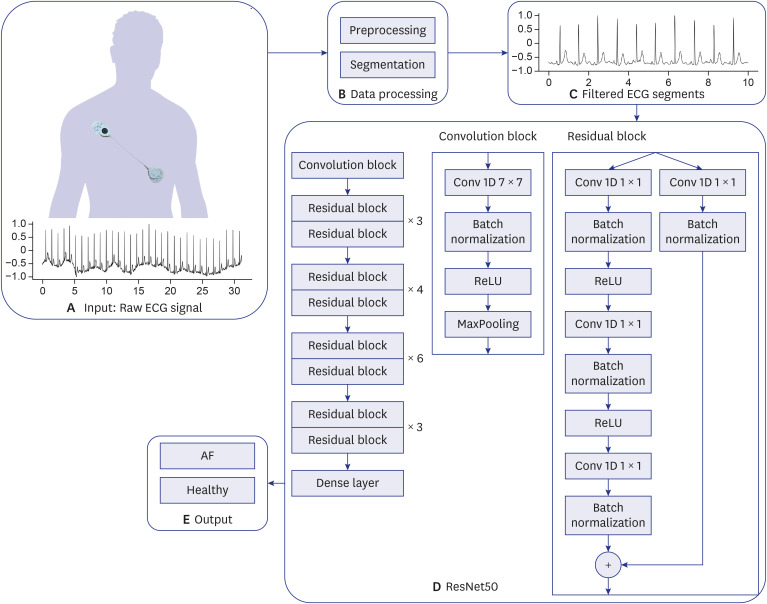
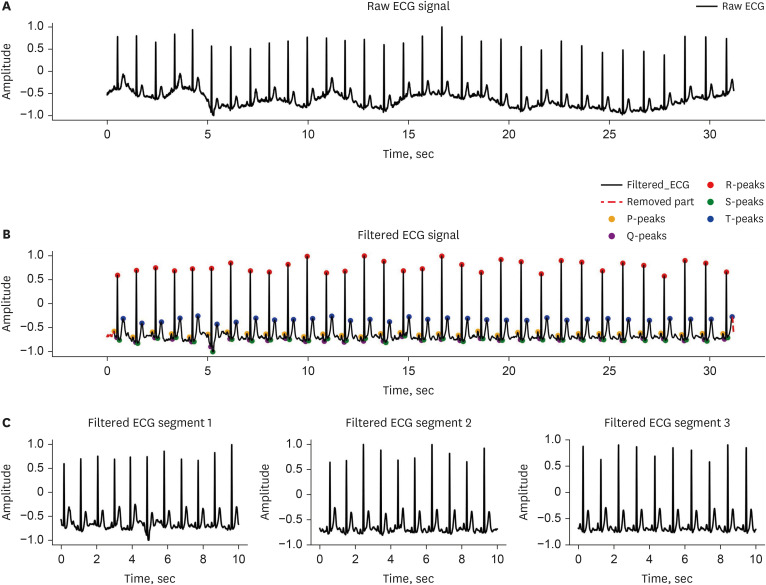
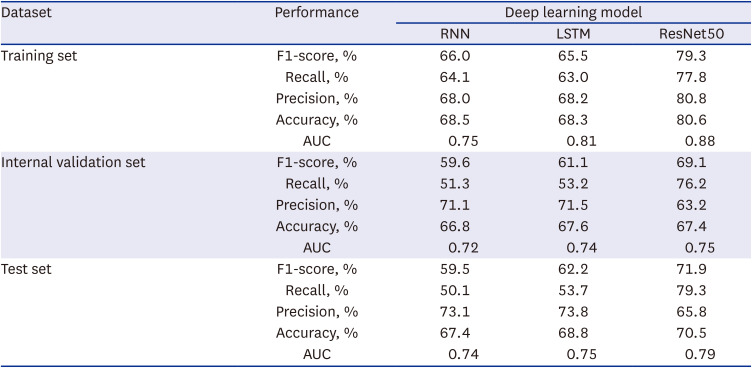

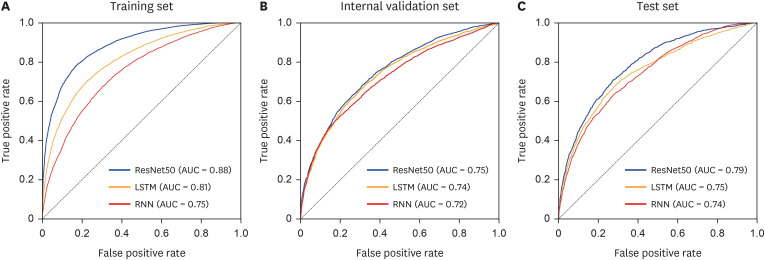




 PDF
PDF Citation
Citation Print
Print



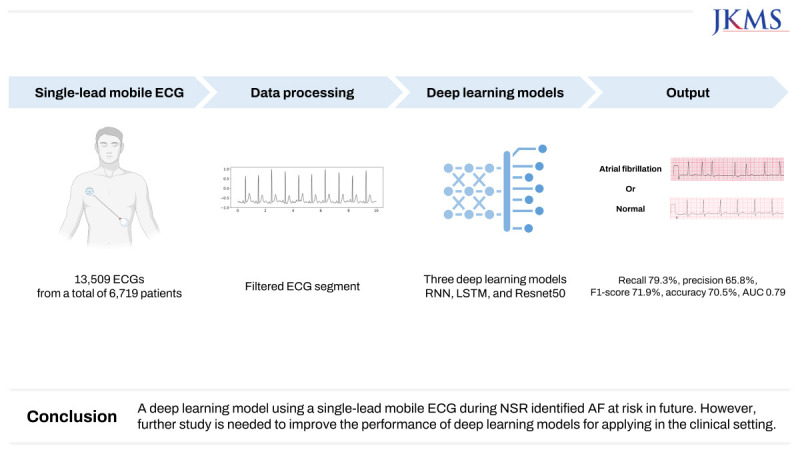
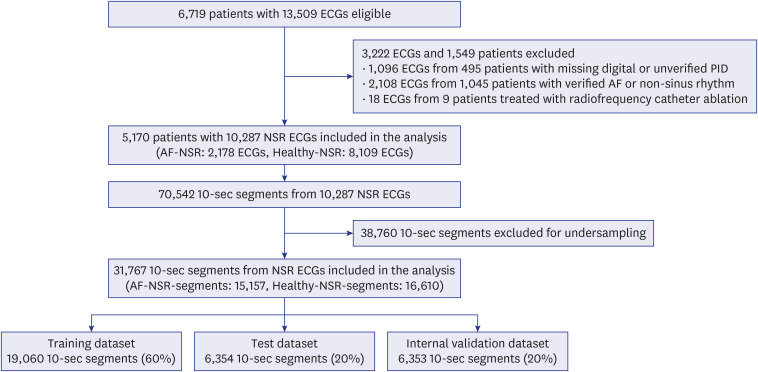

 XML Download
XML Download